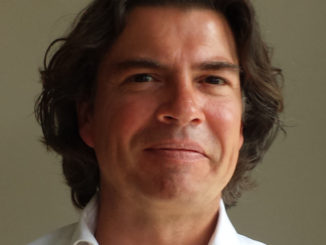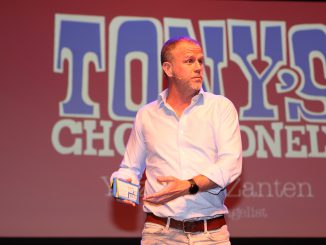
Paul J. Zak: ‘I discovered that teams needed two key components to perform their best: trust among team members and an understanding of the purpose of their work. We found that both of these have a shared neurologic foundation, providing a framework to identify best practices when creating or modifying work cultures. Teams that had both high trust and high Purpose blew away the competition.’
Let’s be honest: For many people, work sucks. But for others, work is an adventure. The difference doesn’t always lie in the nature of the work. Two different people can have two very different responses to the same job—but my research has also shown that organizational culture makes a huge difference in how we feel about, and perform, at work.
I spent eight years measuring brain activity while people worked in order to identify the components of workplace culture that make work an adventure. This was preceded by a decade of doing laboratory studies to understand the brain basis for effective teamwork.
I discovered that teams needed two key components to perform their best: trust among team members and an understanding of the purpose of their work. We found that both of these have a shared neurologic foundation, providing a framework to identify best practices when creating or modifying work cultures.
Trust and purpose do not magically arise in companies. Rather, they are strategic assets that can be measured and managed for high performance. My analysis showed that trust and purpose improve the triple bottom line: They are good for employees, improve organizational performance, and strengthen communities.
Oxytocin at work
My experiments in the early 2000s on human cooperation were the first to identify the key role played by the neurochemical oxytocin. We showed that when one is intentionally trusted, even by a stranger, the brain produces oxytocin. This reduces the typical wariness we have of interacting with those we do not know and increases our ability to understand others’ emotions. The enhanced empathy enabled by oxytocin allows humans to quickly form teams and work together effectively.
In fact, this response is graded: The more trust one is shown by others, the more oxytocin is released in the brain. High levels of oxytocin cause people to work harder to help the group achieve its goals. We know it is oxytocin causing cooperation because my colleagues and I developed a way to safely infuse synthetic oxytocin into living human brains. When we do this, self-sacrifice to help others, even those different from us, flourishes.
Trust makes work easier
These laboratory studies showed that when trust between team members is high, oxytocin flows and work feels less like, well, work, and more like doing interesting things with friends. A number of businesses, including retailer Zappos.com and office designer Herman Miller, agreed to let me draw blood and measure brain activity from their employees as they worked. These tests confirmed our lab findings: Teams that caused oxytocin release in each other were more productive and innovative, and enjoyed the tasks they were doing more, than those whose brains did not connect to their teammates’.
Making work meaningful
Management thinkers from W. Edwards Deming to my late colleague Peter Drucker asserted that the only reason an organization exists is because it improves people’s lives. Why else would you pay for a company’s or nonprofit’s product or service? I call this an organization’s transcendent purpose—or just “Purpose” for short.
This is a distinct notion from the essential quotidian doing of business that is a company’s transactional purpose. Studies from my lab and others have shown that working with Purpose is a potent oxytocin stimulus. When colleagues understand a company’s Purpose and, importantly, act on it while at work, a second oxytocin stimulus arises because most of us value helping others. My experiments showed that teams that had both high trust and high Purpose blew away the competition.
But would this be true across a large group of organizations? That is what I had to prove next.
Finding leverage
I ran experiments to figure out what types of behaviors between colleagues would stimulate oxytocin release. These studies showed that there are eight building blocks for organizational trust. I created a handy acronym so they are easily remembered, OXYTOCIN:
- Ovation: recognize high performers
- eXpectation: design difficult but achievable challenges
- Yield: train extensively and delegate generously
- Transfer: facilitate job crafting
- Openness: share information broadly
- Caring: intentionally build relationships
- Invest: promote personal and professional growth
- Natural: be authentic and vulnerable.
Each of these factors explains between 45 percent and 72 percent of the variation in organizational trust. This means that when leaders change any one of the OXYTOCIN factors, it creates substantial leverage to raise trust and improve performance.
In order to make this scalable, I created a survey (that you can try for yourself) that measures the OXYTOCIN factors so companies can manage trust and foster Purpose.
The impact of trust and purpose
The science relating trust to team performance is convincing, but how much does trust really improve outcomes in actual businesses? If it is only a little, then there is not much to get excited about. To confirm that these findings apply broadly, in late 2016 I collected a nationally representative sample of 1,105 working adults in the U.S. and queried them about their organizations.
- My team found that those working in companies in the highest quartile of trust, compared to those in the lowest quartile, had 106 percent more energy at work, were 76 percent more engaged on the job, and said they were 50 percent more productive.
- High-trust companies had one-half the employee turnover of low-trust companies, with employees at these companies telling us that they were 56 percent more satisfied with their jobs.
- Trust improved alignment with their organization’s Purpose by 70 percent and reduced sick days by 13 percent; those fortunate enough to work in high-trust organizations were 29 percent more satisfied with their lives outside of work. Trust not only improves work, it improves life.
Trust matters. A lot. Our analysis of showed that if a company moved up one quartile in organizational trust, the average employee would produce an additional $10,185 in revenue. Every year. Many of the ways to increase trust that I discuss in Trust Factor do not cost very much, so the return on an investment in trust is often hundreds of dollars for each dollar spent. Don’t tell economists this, but working at high-trust companies with Purpose is fun: Colleagues are doing important work for the world with people who support them.
It all starts by identifying your organization’s Purpose—how you connect to, and serve, others. Then, empower colleagues with trust and challenge them to reach audacious goals that improve the world, one customer at a time.
There are no human resources at work, just human beings. It’s time to start treating those at work as the fallible, emotional, surprising, and intrinsically wonderful human beings that they are.
Dit is een samenvatting.



